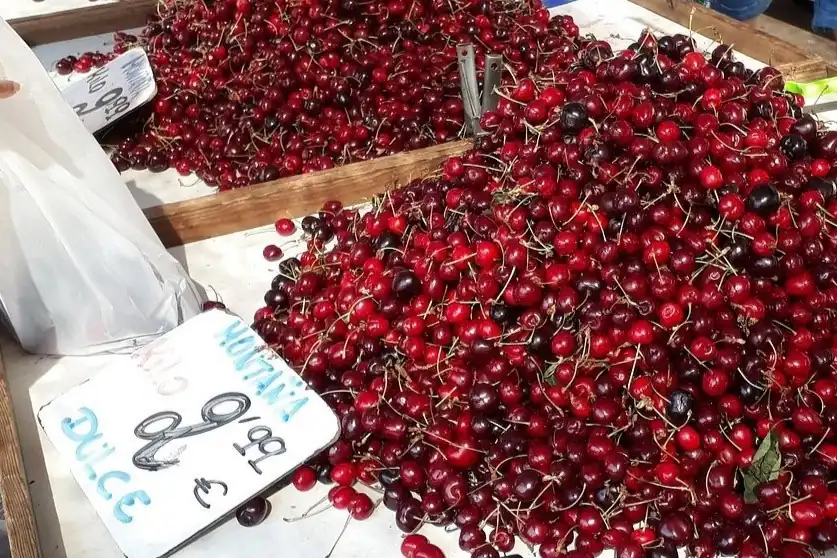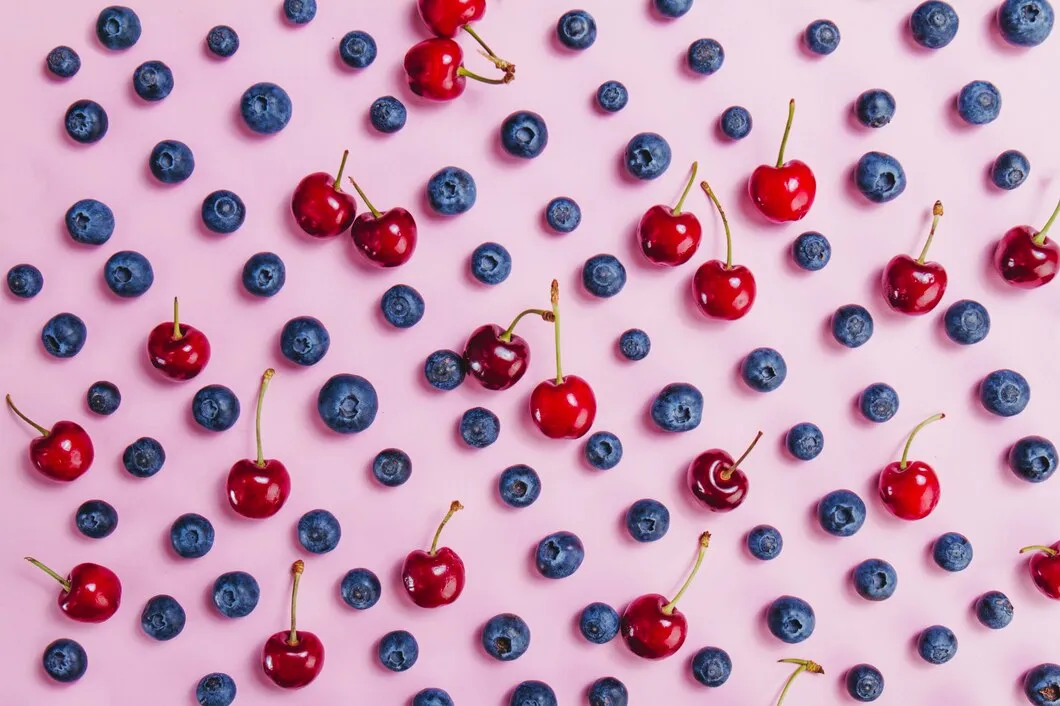Globally, there are 66 insect species that can be employed for pollination, with the western honeybee (Apis mellifera L.) being the most well-known and utilised by farmers. However, also mason bees (Osmia spp.) have been used as managed pollinators for decades, particularly for the pollination of fruit trees, such as cherry trees.
Some essential prerequisites for their successful mass rearing are their gregarious nesting behaviour and the adaptability to multiple artificial nesting materials (e.g., wooden blocks, bamboo, cardboard material). Mason bees possess a number of characteristics that make them an ideal pollinator for early spring-blooming sweet cherry cultivars, a time when frequent inclement weather could have negative effects on fruit set.
At temperatures below 12 °C, honeybee flight activity is severely restricted, limiting their ability to pollinate early blooming crops. Mason bee species, on the other hand, maintain flight activity under low ambient temperatures, light rain, and gusty conditions, thereby providing a more uniform and consistent pollination service that is largely independent of adverse weather conditions.
Their higher rate of row changes compared to honeybees or bumble bees may ensure adequate pollen transfer for a crop requiring cross-pollination, such as sweet cherry. For these reasons, in sweet cherry orchards they are occasionally used as a substitute for or in addition to honeybees (Apis mellifera) as a managed pollinator.
However, the absence of practical guidelines for management practises, such as optimal loading rates, for both mason bee nesting material and honeybees may compromise the provision of pollination services.
This study examined the relationship between stocking rates (honeybee colonies and mason bee nesting material) and honeybee and mason bee abundance in 17 sweet cherry orchards in central Germany.
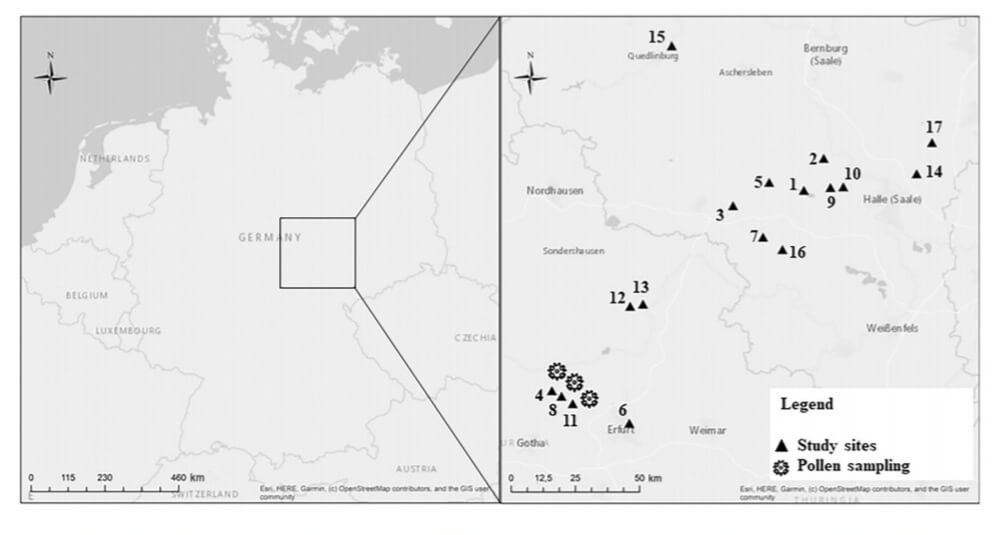 Figure 1: Study sites in Central Germany. In 2020, bee abundance and fruit set were measured in 17 sweet cherry orchards (black triangles) with varying bee management. In a subset of three sites (sites 4, 8 and 11, labelled with an additional pollen grain icon), trap nests for mason bees were installed and the identity pollen in the provisioned nests was examined.
Figure 1: Study sites in Central Germany. In 2020, bee abundance and fruit set were measured in 17 sweet cherry orchards (black triangles) with varying bee management. In a subset of three sites (sites 4, 8 and 11, labelled with an additional pollen grain icon), trap nests for mason bees were installed and the identity pollen in the provisioned nests was examined.
Additionally, a pollination experiment was conducted to investigate the interactive influence of mason bees and honeybees on the fruit set of sweet cherry trees. In orchards, the honeybee and mason bee populations increased in proportion to the stocking rates of hives and nesting materials, respectively. The abundance of honeybees increased linearly with stocking rates
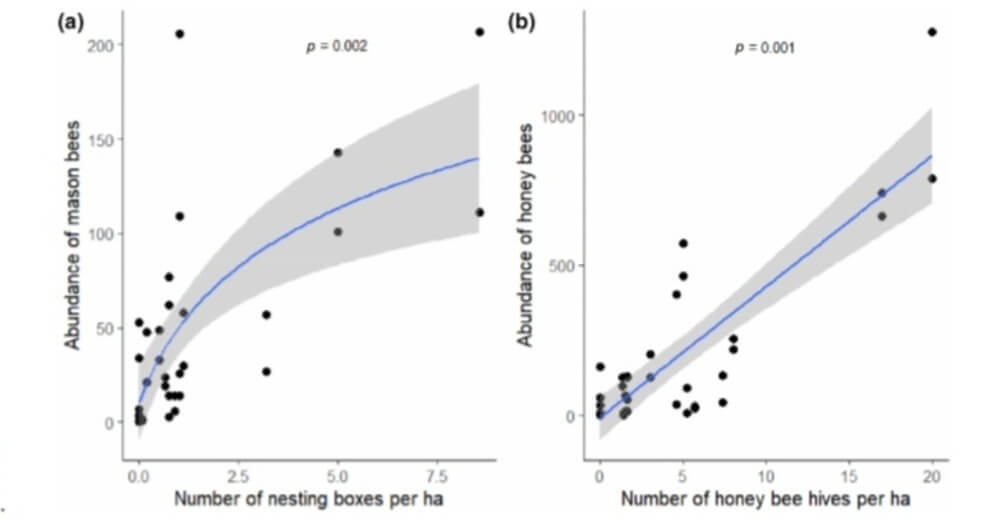 Figure 2. Number of mason bees (a) and honey bees (b) observed in orchards during transect walks in relation to the amount of mason bee nesting material or the number of honey bee hives per ha, respectively. The blue lines correspond to the predicted relationships (GLMM) with, in dark grey, the 95% confidence intervals.
Figure 2. Number of mason bees (a) and honey bees (b) observed in orchards during transect walks in relation to the amount of mason bee nesting material or the number of honey bee hives per ha, respectively. The blue lines correspond to the predicted relationships (GLMM) with, in dark grey, the 95% confidence intervals.
In contrast, the profusion of mason bees reached a plateau at 2–3 nesting boxes per hectare, after which adding more nesting boxes had little effect on the visitation rate. The pollination experiment revealed that pollen was scarce in orchards, as only 28% of insect-pollinated flowers produced fruit, compared to 39% of optimally hand-pollinated flowers.
Honeybees and mason bees enhanced the fruit set of sweet cherry trees, but only when both species were present in the orchard. This indicates that providing mason bee nesting material and employing honeybee colonies can increase bee abundance in sweet cherry orchards.
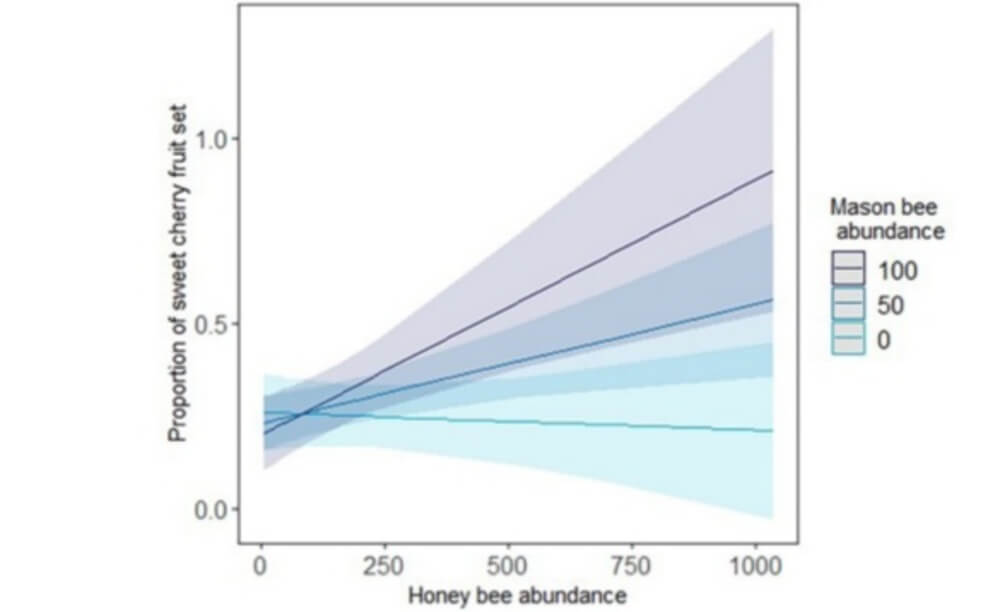 Figure 3. Predicted interaction effect of mason bee and honey bee abundances on the proportion of sweet cherry flowers that set fruit (treatment O), estimated from an LMM. Effects of increasing honey bee abundance are plotted for different mason bee abundances: no mason bees present (bright blue line), 50 mason bees per transect walk (blue line) and 100 mason bees per transect walk (dark blue line). Lines correspond to predicted relationships and shaded areas to 95% confidence intervals derived from the linear mixed effect model.
Figure 3. Predicted interaction effect of mason bee and honey bee abundances on the proportion of sweet cherry flowers that set fruit (treatment O), estimated from an LMM. Effects of increasing honey bee abundance are plotted for different mason bee abundances: no mason bees present (bright blue line), 50 mason bees per transect walk (blue line) and 100 mason bees per transect walk (dark blue line). Lines correspond to predicted relationships and shaded areas to 95% confidence intervals derived from the linear mixed effect model.
By increasing honeybee and mason bee populations simultaneously, farmers can considerably increase fruit set and potentially sweet cherry yield. The abundances of honeybees and mason bees had a synergistic effect on the fruit set of the highly pollinator-dependent crop.
As other studies have similarly emphasised the facilitative effect of non-Apis bees on the performance of honeybees, all the researchers involved in the study encourage farmers to safeguard diverse wild pollinator communities in orchards by implementing protective measures. Combining multiple measures to promote pollination services is a sustainable method for ensuring crop pollination resilience.
Source: Osterman, J., Benton, F., Hellström, S., Luderer-Pflimpfl, M., Pöpel-Eisenbrandt, A.-K., Wild, B. S., Theodorou, P., Ulbricht, C., & Paxton, R. J. (2023). Mason bees and honey bees synergistically enhance fruit set in sweet cherry orchards. Ecology and Evolution, 13, e10289. https://doi.org/10.1002/ece3.10289.
Melissa Venturi
University of Bologna (IT)
Cherry Times - All rights reserved








